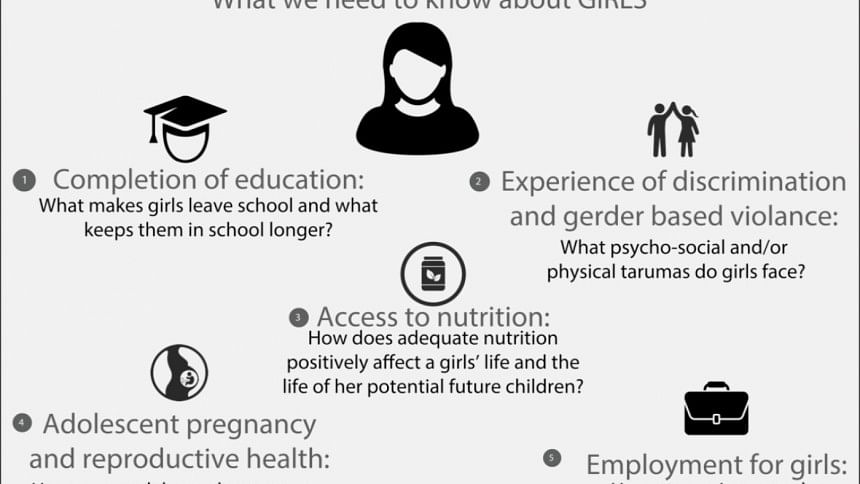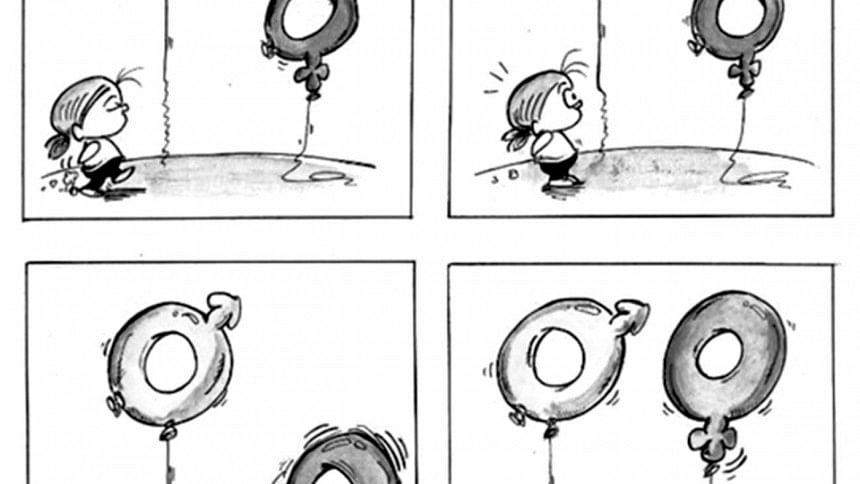Girls' progress = Goals' progress: A global girl data movement

Because every girl counts.The United Nations General Assembly declared 11 October as the International Day of the Girl Child to recognize girls' rights and the unique challenges girls face. Today, we want to highlight that any progress we make with regard to improving the situation of girls will be equal to making progress towards the Sustainable Development Goals (SDGs).
The world today has a population of 1.1 billion girls–almost 15% of the global population –and yet we know that girls are often particularly discriminated against and not given the same life chances as boys. As a result more girls than boys are undernourished, drop out of school, are forced into marriage as children, abused and/or trafficked– violating several of their rights outlined in the Convention on the Rights of the Child – as well as most countries' constitutions.
Discriminations faced by the girl child, while intuitively known and, sometimes, well reported, are often not documented in the form of data which is representative and can be used to better understand the opportunities and challenges faced by girls. Globally, there is a dearth of girl-focussed, girl-relevant and sex disaggregated data, which can be used to inform key policy and programming initiatives. And without this data it becomes almost impossible to put in place interventions, which support girls to realize their rights and track progress in the advances that are being made.
The Girl Child in Bangladesh
There are approximately 16 million girls in Bangladesh – that is about ten percent of the country's total population. While data on the first decade of a girl's life is more readily available, when it comes to the second decade – the period commonly referred to as adolescence – there is hardly any girl-focussed or girl-relevant data. The Bangladesh Demographic and Health Survey (BDHS) includes data on married adolescent girls between the ages of 15-19 years; the Bangladesh Bureau of Educational Information and Statistics (BANBEIS) has sex disaggregated data on secondary school enrolment, continuation and drop-out rates; the Bangladesh Maternal Mortality and Healthcare Survey (BMMS) includes data on married adolescent girls aged 15-19 years and the Labour Force Survey (LFS) includes sex disaggregated data for those who are between 15-19 years.

It is important to note that these surveys neither focus on issues that are particularly relevant to the unmarried adolescent girl nor include the young adolescent girl, those between 10-14 years, to better understand how and which social issues affect them most. Notably the data that is available through these surveys show the situation of girls is not as good as that of boys. For example according to BANBEIS (2014), 68 percent of girls and 57 percent of boys enrol in secondary school education, indicating that more girls than boys are in secondary school education. However, a closer analysis of the data reveals that more girls than boys drop out of secondary school education. It is 47 percent of girls who leave secondary school before completion, compared to 35 percent of boys,thus contributing to the lower levels of secondary school completion among girls.
The 2013 Labour Force Survey shows that there are fewer numbers of girls participating in the labour force than boys. In the age group 15-19 years 2.8 million male and 1.9 million female were either working or seeking employment. This raises questions as to why girls of this age are participating less in the labour force than their male counterparts. There is moreover a lack of data indicating what types of employment girls in this age group are engaged in, which could be used to put in place measures to increase female labour force participation. Finally, the data on child marriage prevalence is far worse for girls than for boys in Bangladesh, compared with other South Asian countries where young boys are also given in marriage. The BDHS also highlights that indicators for married adolescent girls of 15-19 years – be it with regard to contraceptive prevalence rates or the unmet need for family planning – are worse than among the older cohort of married women.
Making girl-focused data available and investing in adolescent health and education will facilitate tailored policy, programming and budgeting, and thus realize the country'sexpressed commitment to uphold the rights of the Girl Child.
EMILIO MORALES RUIZ, SPAIN. WINNER OF THE UN WOMEN EUROPEAN COMMISSION, THE BELGIAN DEVELOPMENT COOPERATION, AND UNRIC ORGANIZED COMIC AND CARTOON COMPETITION ON GENDER EQUALITY IN 2015.

Because every effort COUNTS!
This supplement has been jointly written by UNFPA and UNICEF.

 For all latest news, follow The Daily Star's Google News channel.
For all latest news, follow The Daily Star's Google News channel. 



Comments